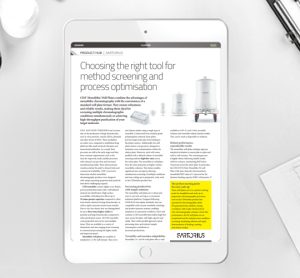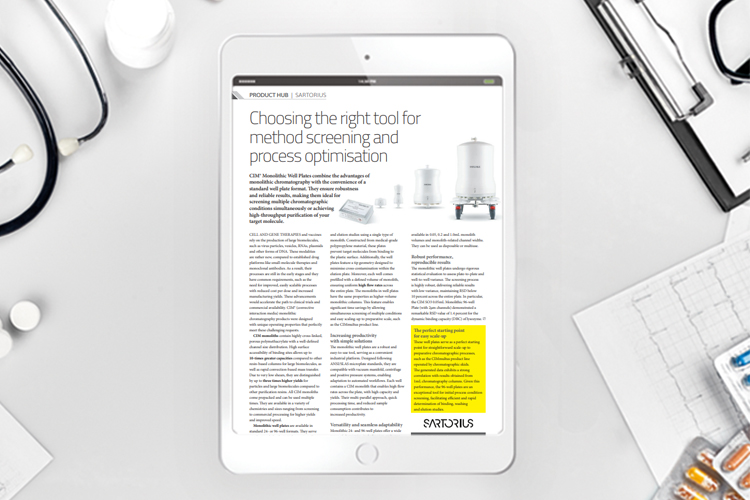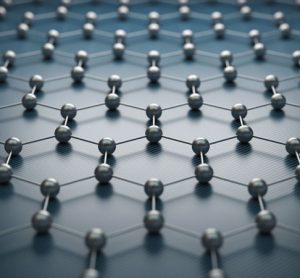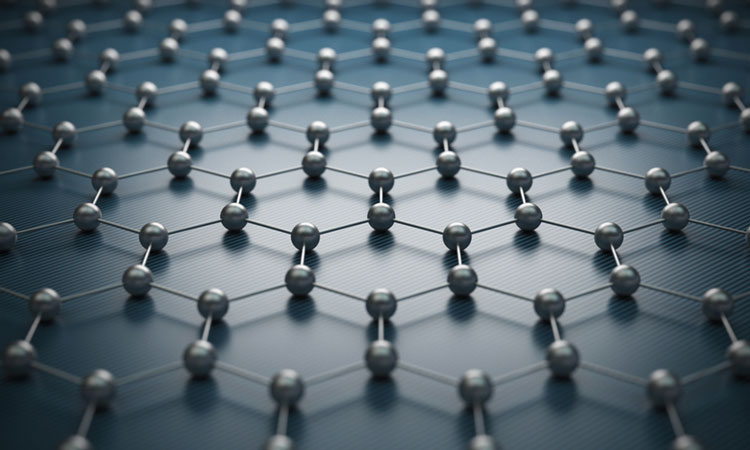Product hub: Choosing the right tool for method screening and process optimisation
CIM® Monolithic Well Plates combine the advantages of monolithic chromatography with the convenience of a standard well plate format. They ensure robustness and reliable results, making them ideal for screening multiple chromatographic conditions simultaneously.








